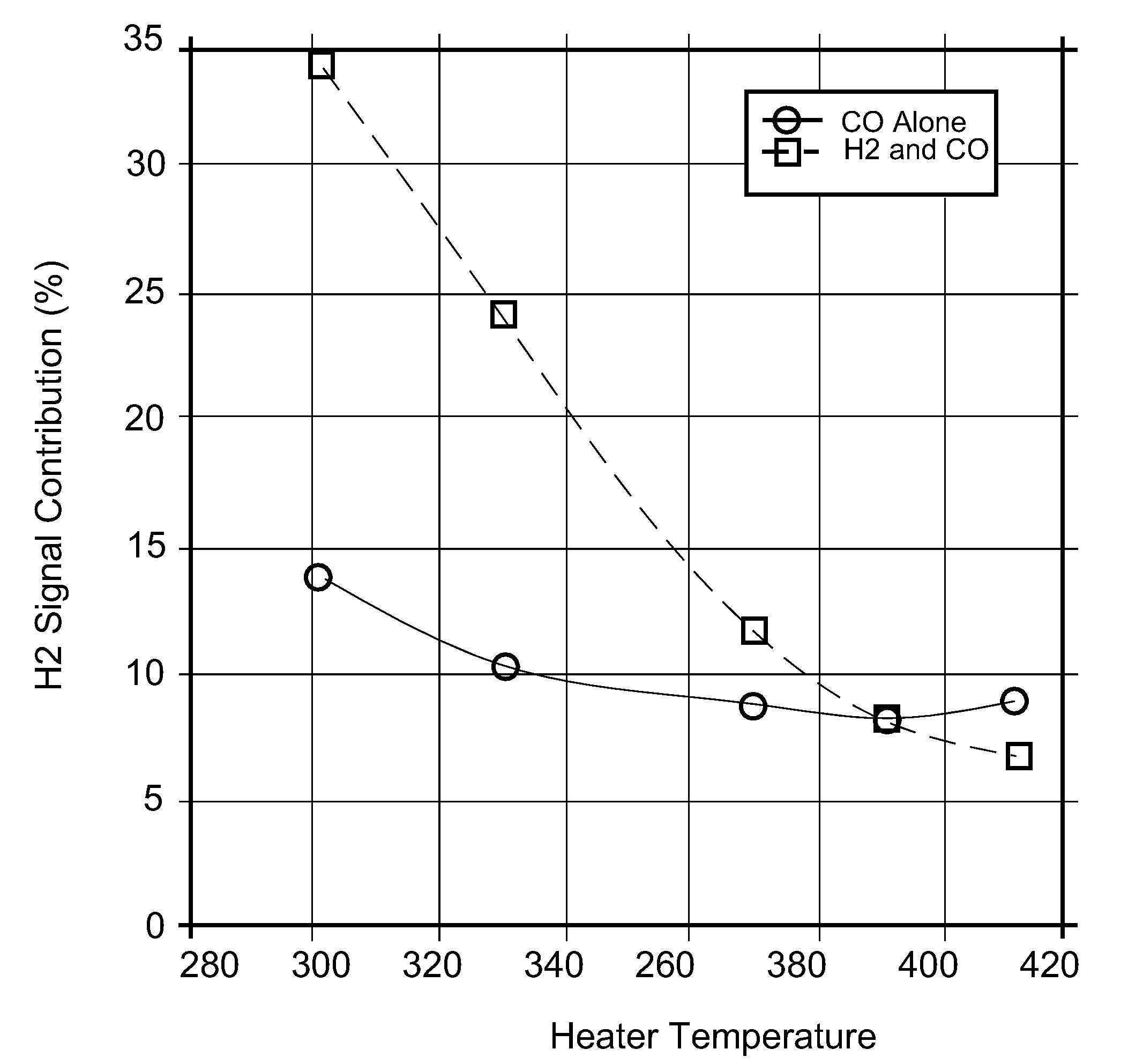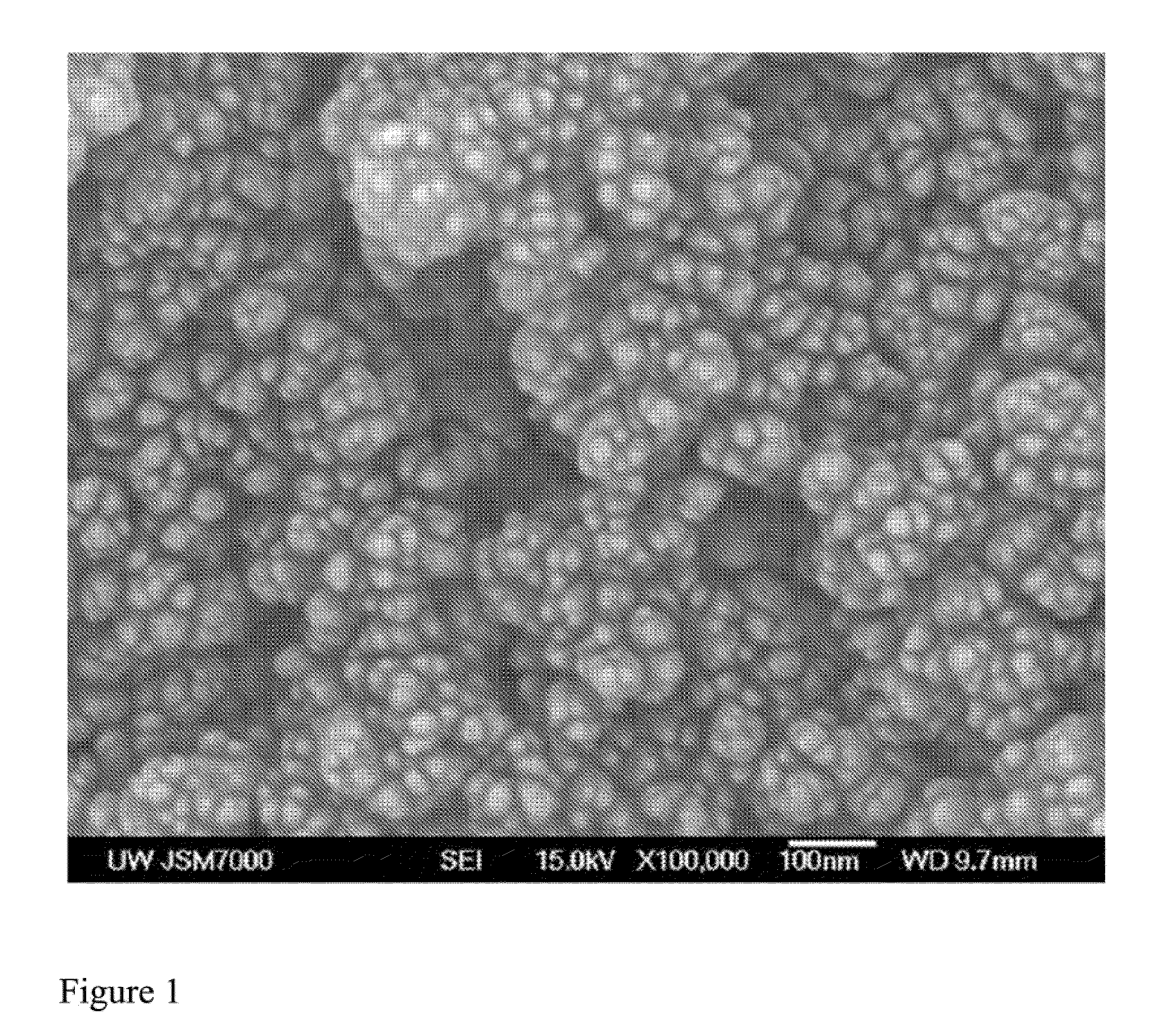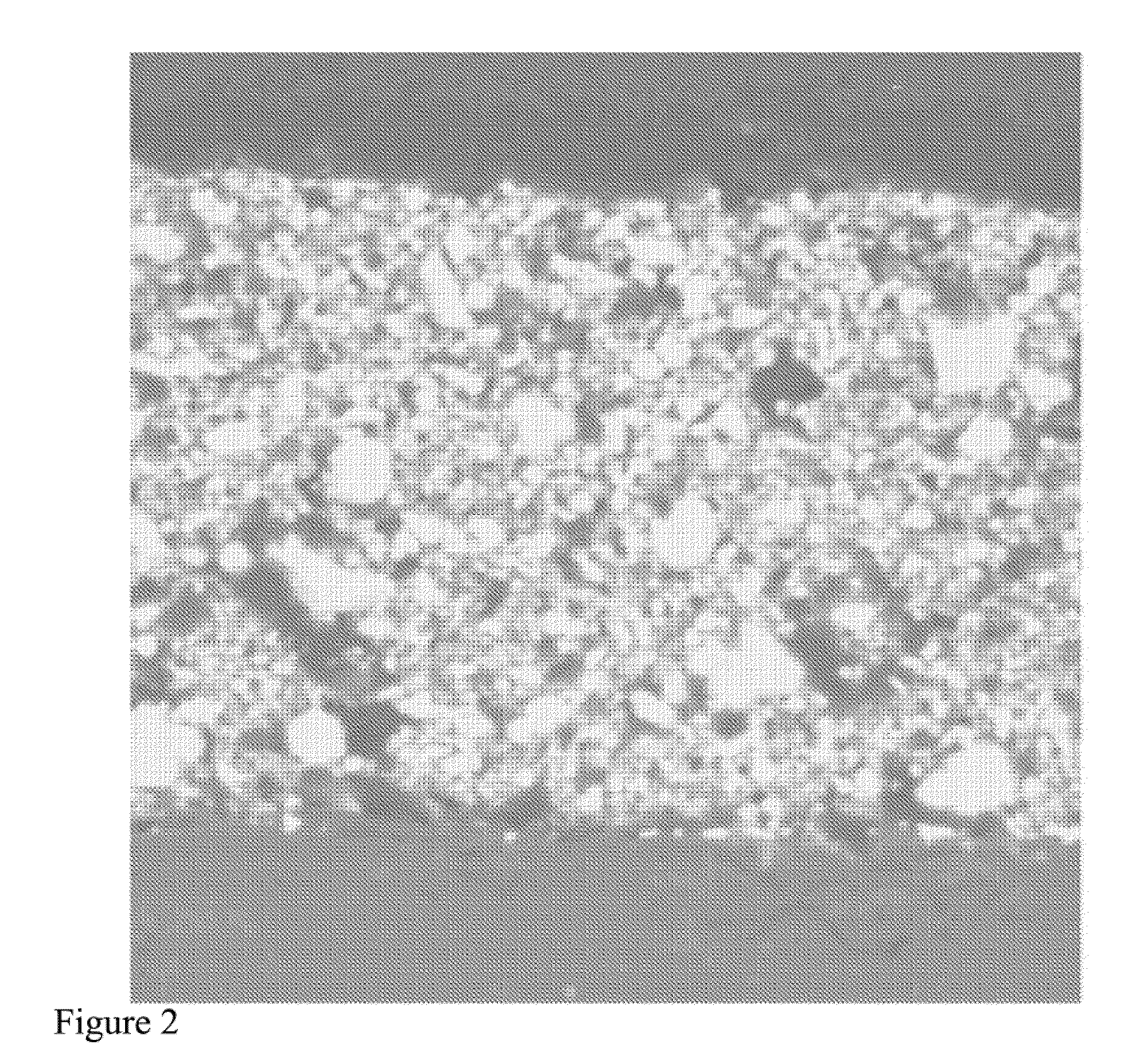Sensitive Materials for Gas Sensing and Method of Making Same
a sensitive material and gas sensing technology, applied in the field of formulation and processing of sensitive materials, can solve the problems of low sensitivity, limited dynamic detection range, slow response and relaxation time, etc., and achieve the effects of high reaction rate, fast response and high efficiency
- Summary
- Abstract
- Description
- Claims
- Application Information
AI Technical Summary
Benefits of technology
Problems solved by technology
Method used
Image
Examples
example i
Challenges to Producing Screen Printable Sense Layer Pastes
[0070]PdCl2 crystals are virtually insoluble in water and organic solvents commonly used for paste vehicles. An attempt was made to make paste with undisclosed PdCl2 crystals added directly to the vehicle, however it has been found that the metal chlorides rapidly attack the stainless steel screens used for printing. It was also nearly impossible to keep the PdCl2 from reacting with other paste components and dropping out of suspension before printing could be accomplished.
[0071]The very high surface area of the nanoparticle oxide powders makes it difficult to formulate screen printing vehicles and pastes with sufficiently high solids content. As the solids content is increased, the viscosity also increases rapidly and problems with leveling, deep screen marks and trapped air bubbles make it impossible to produce a satisfactory screen printed thick film. Conversely, when the solids content is reduced the viscosity decreases ...
PUM
| Property | Measurement | Unit |
|---|---|---|
| mean particle size | aaaaa | aaaaa |
| mean particle size | aaaaa | aaaaa |
| particle size | aaaaa | aaaaa |
Abstract
Description
Claims
Application Information
 Login to View More
Login to View More - R&D
- Intellectual Property
- Life Sciences
- Materials
- Tech Scout
- Unparalleled Data Quality
- Higher Quality Content
- 60% Fewer Hallucinations
Browse by: Latest US Patents, China's latest patents, Technical Efficacy Thesaurus, Application Domain, Technology Topic, Popular Technical Reports.
© 2025 PatSnap. All rights reserved.Legal|Privacy policy|Modern Slavery Act Transparency Statement|Sitemap|About US| Contact US: help@patsnap.com



